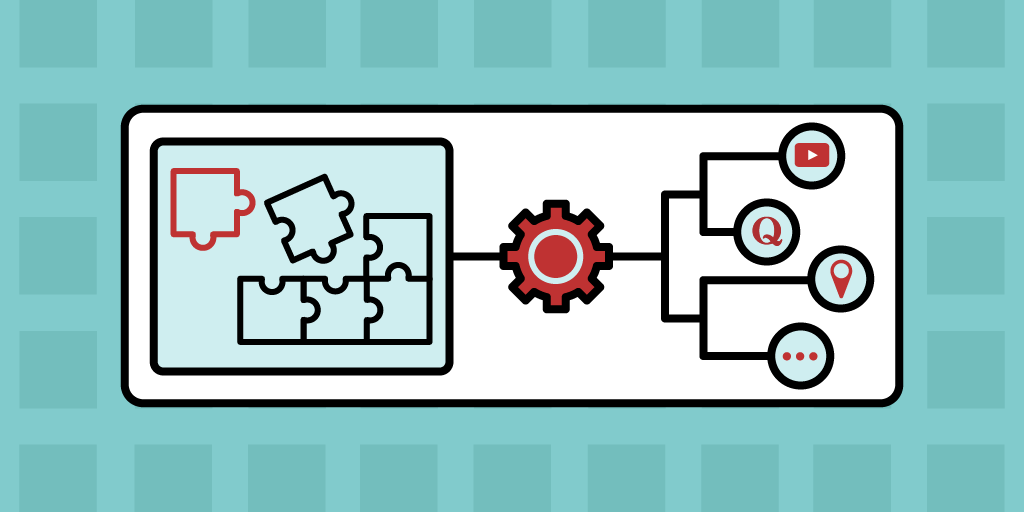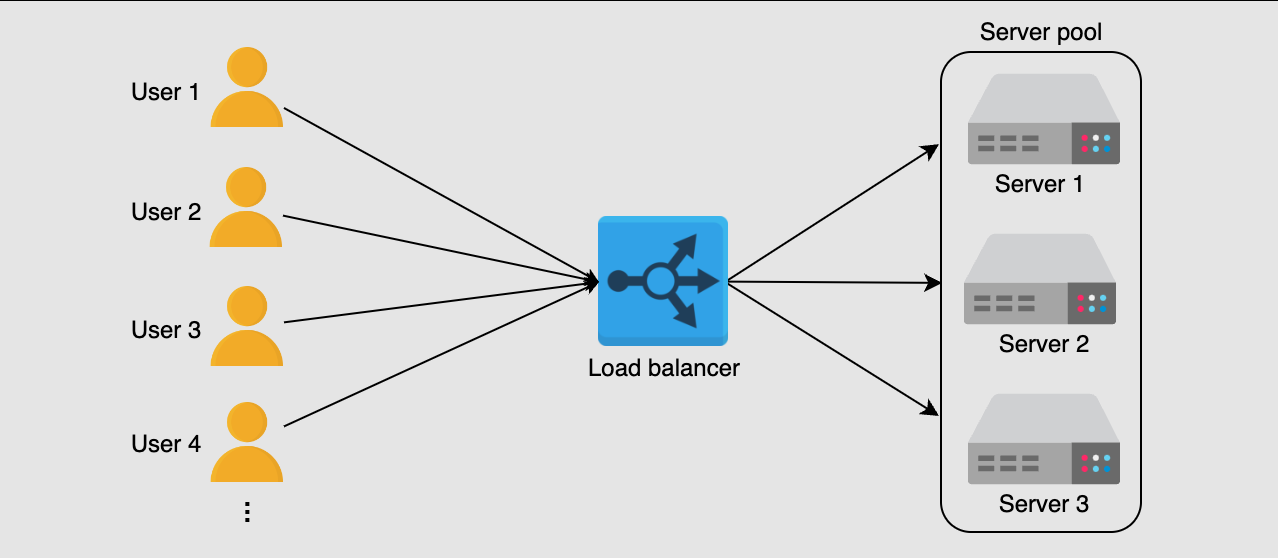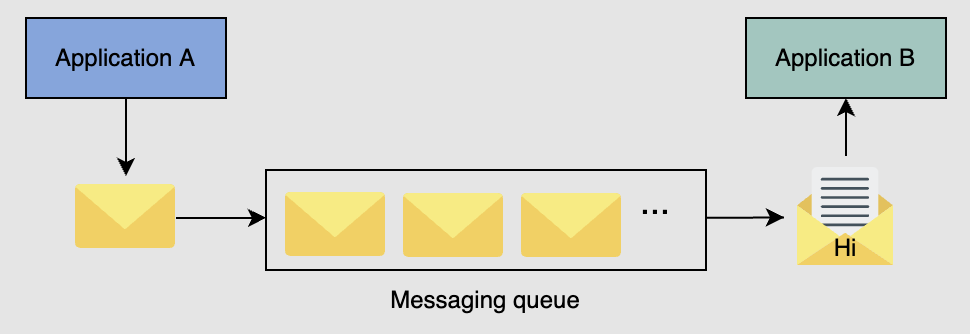What are the components of System Design?
Learning system design can give engineers and managers a serious advantage in the job market. It helps engineers by learning precisely why and when to make certain design decisions, and managers can better understand how these decisions affect business processes. The “building blocks” approach describes common core components of system design so that you can reattribute your knowledge to solve problems of any size. Because of its importance in real-world applications, system design is also a core focus in software engineer system design interview questions. Understanding these foundational elements helps candidates approach interviews with clarity and confidence.
The concept of system design is very complicated and constantly builds upon itself. This article covers the components or main building blocks of modern system design. If you want to familiarize yourself with some other basics of system design or other preliminary concepts like system design patterns or scalable web applications check out this article on the complete guide to system design.
Get hands on with system design.#
Try one of our 300+ courses and learning paths: Grokking Modern System Design for Software Engineers and Managers.
What is system design?#
At its simplest, system design is the process of defining: building blocks and their integration, APIs, and data models that all function together to create large-scale systems.
It is important to keep in mind that each system is designed to meet certain predetermined functional and non-functional requirements.
System design aims to build systems that are: reliable, effective, and maintainable
- Reliable systems handle faults, failures and errors.
- Effective systems meet all user needs as well as business requirements.
- Maintainable systems are flexible and easy to scale up or down. The addition of new features is simple in maintainable systems as well.
System design uses the concepts of computer networking, parallel computing, and distributed systems to build systems that perform and scale well. System design concepts build on a prior knowledge of distributed systems. In short, distributed systems are collections of computers that collaborate to form one cohesive computer for the end user. This style of system design architecture is known for scaling well but for being inherently complex.
System Design Deep Dive: Real-World Distributed Systems
This course deep dives into how large, real-world systems are built and operated to meet strict service-level agreements. You’ll learn the building blocks of a modern system design by picking and combining the right pieces and understanding their trade-offs. You’ll learn about some great systems from hyperscalers such as Google, Facebook, and Amazon. This course has hand-picked seminal work in system design that has stood the test of time and is grounded on strong principles. You will learn all these principles and see them in action in real-world systems. After taking this course, you will be able to solve various system design interview problems. You will have a deeper knowledge of an outage of your favorite app and will be able to understand their event post-mortem reports. This course will set your system design standards so that you can emulate similar success in your endeavors.
The components of modern system design#
A more accurate term to describe these components is “building blocks.”
The idea of modern system design stems from the approach of piecing together building blocks to form one cohesive piece.
By treating separate system design concepts as building blocks to form a larger whole, we can break down complex problems in a digestible and understandable way. System design problems typically have some overarching similarities. However, most of the specific details are unique. By separating these unique building blocks and describing them one at a time, we can then utilize them as independent building blocks in system design. It is important to consider the software design patterns that we see when it comes to large-scale system design.
Many of the building blocks discussed in this article are also available for use in public clouds. You may be familiar with some of these services offered through Amazon Web Services (AWS), Microsoft Azure, and Google Cloud Platform (GCP).
Learn more about the product design of the cloud computing service, Azure
Load balancers#
Load balancing is a key building block of system design. It involves delegating tasks over a set width of resources.
There may be millions of requests per second to a system on average. Load balancers ensure that all of these requests can be processed by dividing them between available servers.
This way, the servers will have a more manageable stream of tasks, and it is less likely that one server will be overburdened with requests. Evenly distributing the computational load allows for faster response times and the capacity for more web traffic.
Load balancers are a crucial part of the system design process. They enable several key properties required for modern web design.
- Scaling: Load balancers facilitate scaling, either up or down, by disguising changes made to the number of servers.
- Availability: By dividing requests, load balancers maintain availability of the system even in the event of a server outage.
- Performance: Directing requests to servers with low traffic decreases response time for the end user.
Key value stores#
A key value store or key value database are storage systems similar to hash tables or dictionaries. Hash tables and dictionaries are associative as they store information as a pair in the (key, value) format. Information can easily be retrieved and sorted as a result of every value being linked to a key.
Key value stores are distributed hash tables (DHT).
Distributed hash tables are just decentralized versions of hash tables. This means they share the key-value pair and lookup methods.
The keys in a key value store treat data as a single opaque collection. The stored data could be a blob, server name, image, or anything the user wants to store. The values are referred to as opaque data types since they are effectively hidden by their method of storage. It is important that data types are opaque in order to support concepts like information hiding and object-oriented programming (OOP).
Examples of contemporary, large-scale key value stores are Amazon’s DynamoDB and Microsoft Cassandra.
Blob storage#
Blob, or binary large object, storage is a storage solution for unstructured data. This data can be mostly any type: photos, audio, multimedia, executable code, etc.
Blob storage uses flat data organization patterns, meaning there is no hierarchy of directories or sub-directories.
Most blob storage services such as Microsoft Azure or AWS S3 are built around a rule that states “write once, read many” or WORM. This ensures that important data is protected since once the data is written it can be read but not changed.
Blob stores are ideal for any application that is data heavy. Some of the most notable users of blob stores are:
- YouTube (Google Cloud Storage)
- Netflix (Amazon S3)
- Facebook (Tectonic)
These services generate enormous amounts of data through large media files. It is estimated that YouTube alone generates a petabyte (1024 terabytes!) of data every day.
Databases#
Traditional methods of file storage have significant limitations when it comes to scaling and flushing out the functionality of a system. The answer to these constraints is databases.
A database is an organized collection of data that can be easily accessed and modified. Databases exist to make the process of storing, retrieving, modifying, and deleting data simpler.
There are two basic types of databases:
- SQL, relational databases
- NoSQL, non-relational databases
In short, relational databases are structured, use a predetermined schema, and record data such as contact numbers and addresses. Non-relational databases are unstructured and use a dynamic schema. Non-relational databases are file directories that store information like personal profiles or shopping preferences.
Databases are an almost universal building block of system design, and there is a lot to cover. To dive deeper into databases check out this Database design tutorial.
Rate limiters#
A rate limiter sets a limit for the number of requests a service will fulfill. It will throttle requests that cross this threshold.
Rate limiters are an important line of defense for services and systems. They prevent services from being flooded with requests. By disallowing excessive requests, they can mitigate resource consumption.
In some cases, rate limiters can perform a similar function to load balancers. In systems that process large amounts of data, they help to control the flow of data between machines.
Monitoring systems#
Monitoring systems are software that allow system administrators to monitor infrastructure. This building block of system design is important because it creates one centralized location for observing the overall performance of a potentially large system of computers in real time.
Monitoring systems should have the ability to monitor factors such as:
- CPUs
- Server memory
- Routers
- Switches
- Bandwidth
- Applications
- Performance and availability of important network devices
Distributed messaging queues#
A messaging queue is an intermediary between two connected entities known as producers and consumers. A producer creates messages and consumers receive and process them.
Messaging queues help improve performance through asynchronous communication since producers and consumers act independently of each other. As a result, a messaging queue helps to decouple or reduce dependency in the system. This improves reliability and allows for a simpler, less cluttered system design. In addition, asynchronous messaging facilitates scalability. More consumers can be added in order to compensate for increased load.
There are several different use cases for a distributed messaging queue.
- Sending emails: As the name suggests, a messaging queue enables sending emails. Many different services are required to send emails for any number of reasons including account verification and password resets.
- Data post-processing: Applications with multimedia support process images and video for different formats or platforms. This can be a time-consuming and resource-intensive process, but messaging queues enable offline processing in order to reduce end-user latency.
- Recommender systems: Many sites use cookies to personalize a user’s content. This system retrieves the user data and processes it. A messaging queue can be incorporated to make this process more efficient as background data processing can be time consuming.
Distributed unique ID generators#
It is important to tag entities in a system with a unique identifier. Millions of events may occur every second in a large distributed system, so we need a method of distinguishing them. A unique ID generator performs this task and enables the logging and tracking of event flows for debugging or maintenance purposes.
In most cases this is a universal unique ID (UUID). These are 128 bit numbers that look like this: 123e4567e89b12d3a456426614174000 in hexadecimal. With a number this size, there is an enormous pool of possible IDs, but it is not completely guaranteed that all will be unique.
We can use a central database that takes a given ID and makes it unique by incrementing the value by one each time. Unfortunately, with a database solution there is one point of failure that can interrupt the entire ID generation process.
The concept of using a database can be diversified with a range handler. Range handlers feature multiple servers that each cover a range of ID values. One server may be assigned the values 100,000 to 300,000. Once it reaches ID 300,001 it will contact a central server to be assigned a new range of values. This increases accessibility allowing the system to stay live in the event of a failure.
Facebook’s own unique ID generator is called Canopy. Canopy uses a system called TraceID to enable end-to-end performance tracing.
Distributed search#
Search bars can be crucial for browsing large websites with hundreds or even thousands of pages. Most modern websites have search bars to help users find precisely what they’re looking for. Behind every search bar there is a search system.
Search systems are composed of three main entities:
- Crawler: finds/fetches content and creates documents
- Indexer: builds a searchable index
- Searcher: runs the search query against the index
Distributed search systems are reliable and ideal for horizontal scalability. A prime example of a digital product for distributed search is Elasticsearch.
Distributed logging services#
Logging is the process of recording data, in particular the events that occur in a software system. A log file is the recording of these details. They may document service actions, transactions, microservices, or any other data that may be helpful when debugging.
Logging in a distributed system is increasingly important as more and more designs move away from monolithic to microservice architectures. Logging in a microservice architecture is convenient because the logs can be traced along a flow of events from end-to-end. Since microservices can create interdependencies in a system, and a failure of one service can cascade to others, logging helps to determine the root cause of the failure.
Distributed task schedulers#
In computing, a task is a unit of work that requires computational resources for some specified amount of time.
These resources may be:
- CPU time
- Memory
- Storage
- Network bandwidth
It is important for tasks like image uploading or social media posting to be asynchronous as to not hold the user waiting for background tasks to end.
Task schedulers mediate the supply-demand balance between tasks and resources to control the workflow of the system. By allocating resources task schedulers can ensure that task-level and system-level goals are met in an efficient manner.
Task schedulers are used across a wide range of systems:
- Cloud computing services
- Large distributed systems
- Single-OS-based nodes
A notable example of a large distributed system task scheduler is Facebook’s task scheduler: Async.
Grokking Modern System Design for Software Engineers and Managers
System Design Interviews decide your level and compensation at top tech companies. To succeed, you must design scalable systems, justify trade-offs, and explain decisions under time pressure. Most candidates struggle because they lack a repeatable method. Built by FAANG engineers, this is the definitive System Design Interview course. You will master distributed systems building blocks: databases, caches, load balancers, messaging, microservices, sharding, replication, and consistency, and learn the patterns behind web-scale architectures. Using the RESHADED framework, you will translate open-ended system design problems into precise requirements, explicit constraints, and success metrics, then design modular, reliable solutions. Full Mock Interview practice builds fluency and timing. By the end, you will discuss architectures with Staff-level clarity, tackle unseen questions with confidence, and stand out in System Design Interviews at leading companies.
Get started with modern System Design today#
You should now have a solid idea of what it takes to design a system and why certain system design solutions are implemented. This is by no means a complete list of all the possible building blocks you may need on your system design journey, but they are a solid foundation to expand upon.
As mentioned, every building block in system design has functional and non-functional requirements that must be met.
After learning what each system does and why they are designed the way they are, we recommend learning how to meet these requirements to build systems yourself. We offer a brand new course designed by system design experts called Grokking Modern System Design for Software Engineers and Managers. This course outlines all of the aforementioned building blocks and more, and then goes on to introduce system-design scenarios of real-world applications.
There are five other building blocks integral to designing systems not discussed in this article. They are:
- Domain Name System (DNS)
- Content Delivery Network (CDN)
- Distributed Caching
- Publish-Subscribe System
- Sharded Counters
By the end, you will understand how to create and implement modern system design building blocks, as well as solve any potential system design problems posed in an interview.
Additionally, you’ll learn techniques, protocols, and design principles of large-scale distributed systems that have successfully stood the test of time. Just a few of these systems are:
- YouTube
- Uber
- Instagram, and many others
Happy learning!



